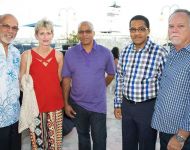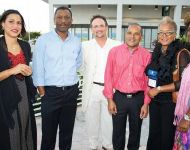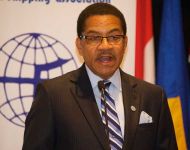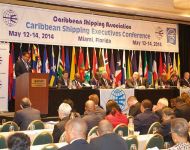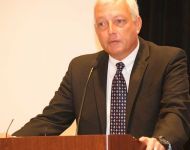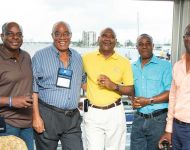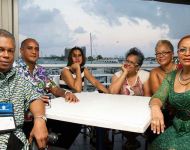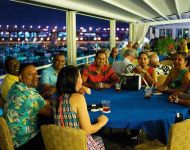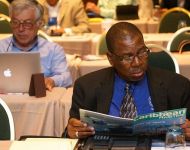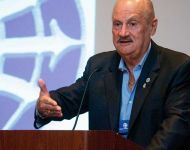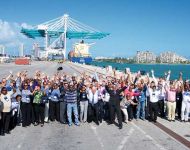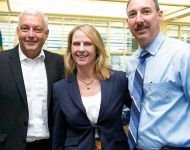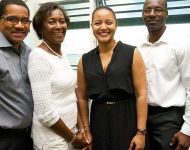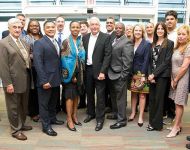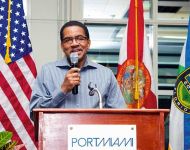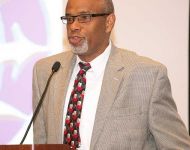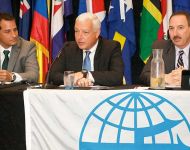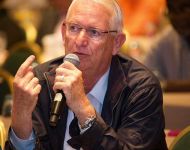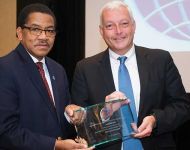HAITI
These facilities were paralyzed for two weeks and Port-au-Prince could not receive the humanitarian aid destined to alleviate the suffering of the people.
It was two weeks before the United States Army was able to devise an appropriate response to the disaster by supplying two floating barges, which were used to discharge both humanitarian aid and commercial cargo. The US Army also installed ramps to allow military landing craft and ro-ro ships to discharge cargo on the beach.
As Haiti continues to recover from the devastation of the 2010 earthquake, the port authority has set out its main priorities in terms of investment and reconstruction with a view to encouraging maritime trade.
Modernization
The APN is now engaged in modernization and expansion of the nation’s port facilities. One of its top priorities in Port-au-Prince is to rebuild the North Pier in order to provide a safer and more efficient infrastructure and, ultimately, to end the surcharge fees that were made necessary by the rental charges on the floating barges.
In addition to Port-au-Prince, the APN is rehabilitating the country’s second port facility at Cap-Haitien on the north coast. With the assistance of the United States Agency for International Development (USAID), a total of US$65 million will be allocated for this project, which will be carried out in three phases.
In its bid to attract more sea trade, the APN has set out various lines of action:
- To develop and coordinate a master plan for development of both major and minor ports in Haiti in order for investors to understand the likely competitive environment over the next 10 to 20 years.
- To carry out institutional and legal reforms with a view to creating a favorable business environment such as a public-private partnership (PPP) that can attract significant private investment and open up the sector to competition by encouraging more shipping lines to call Haiti.
- To focus on expanding the size of its container market through measures such as increasing employment and attracting industrial investment and to persuade more shipping lines to call.
- To achieve financial sustainability.
Security
In Haiti, as everywhere else around the world, security is a key issue. A spokesman for the APN said: “When it is connected to trade it is as important as the cost of raw material and labor because of the ‘just in time’ concept.”
Accordingly, the Government of Haiti has put in place several measures, both physical and operational, and has worked closely with the International Maritime Organization (IMO), the Organization of American States’ Inter-American Committee against Terrorism (CICTE) and the United States Coast Guard in order to address the global threat of terrorism.
The ports of Haiti are certified according to the International Ship and Port Facility Security (ISPS) Code and are visited periodically by the US Coast Guard as part of the ISPS reciprocal program.
The accompanying tables show how the maritime sector of Haiti has recovered from the effects of the earthquake in January 2010 in terms of cargo throughput and ship calls. Total throughput of dry and liquid bulk cargoes went up from 1,737,594 tonnes in 2009-2010 to 2,374,735 tonnes in 2012-2013 – an increase of 36.6 per cent. In the same period, container handling was up from 162,805 teu to 172,561 – an increase of just under six per cent. However, there was a fall in the number of ships calling Port-au-Prince, from 933 to 841.
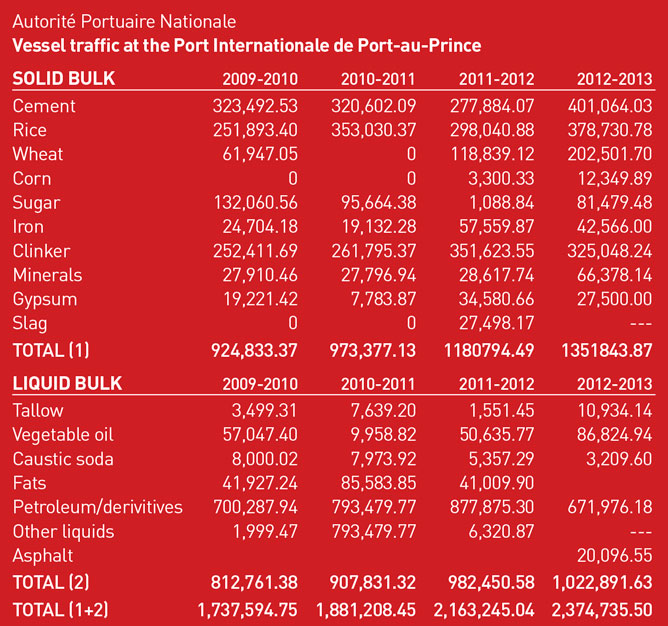
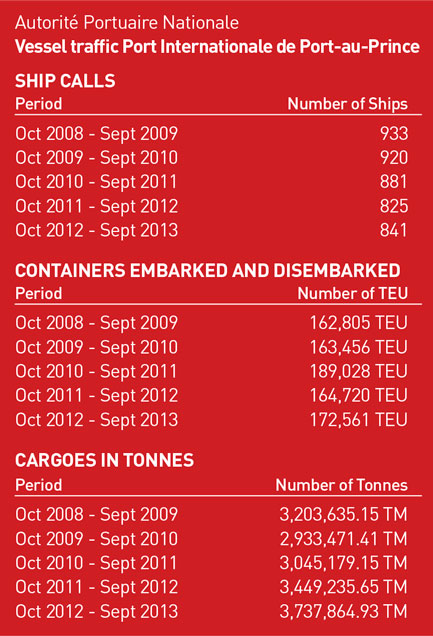
Cruise sector
Haiti is a beautiful country and there is a modest level of cruise business with plans for an expansion in the near future.
Currently, Haiti’s only cruise destination is the port and resort of Labadee, on the north coast, which is managed by Royal Caribbean International. It is generally agreed that this facility has been a successful experience, with 159 cruise ships and 800,000 passengers received at Labadee in 2014.
Now, Carnival Corporation had announced plans to invest US$ 70 million in a new cruise port on the island of Tortuga, just off the north coast.
Workforce
The APN employs about 560 people, including nearly 300 at Port-au-Prince, just under 80 at Cap-Haitien and the rest for the coast-to-coast port (cabotage). Dock workers are employed by the terminal operators.



